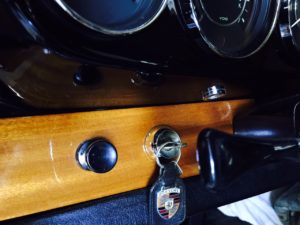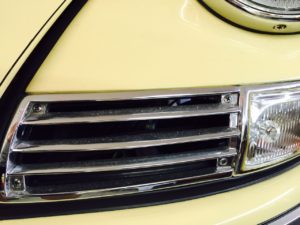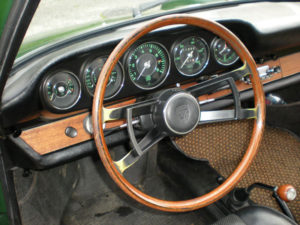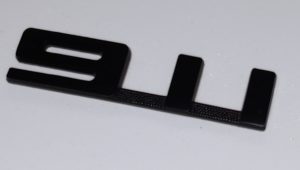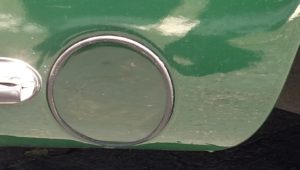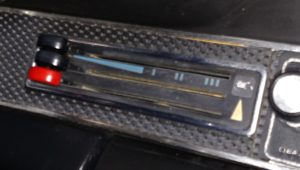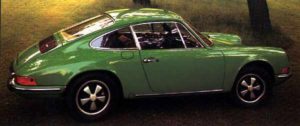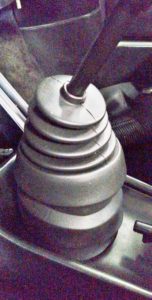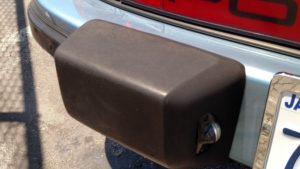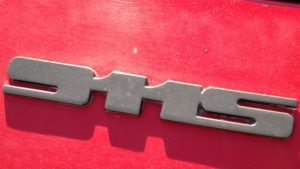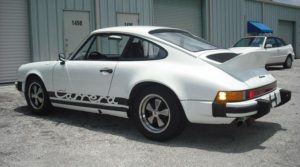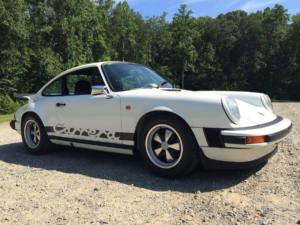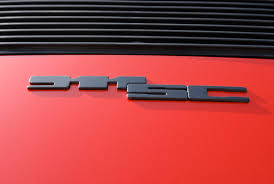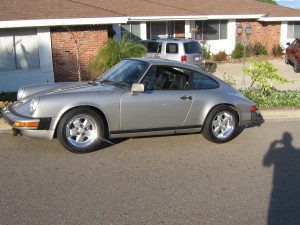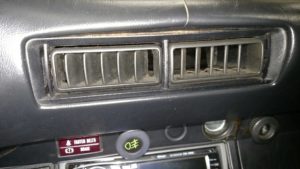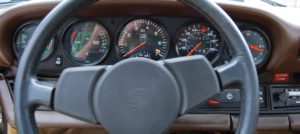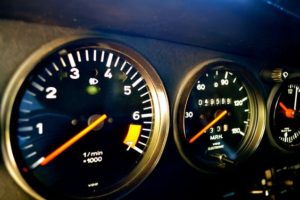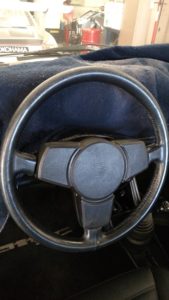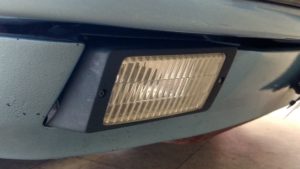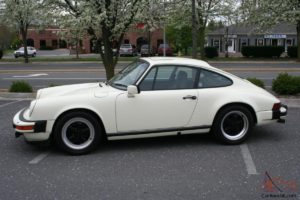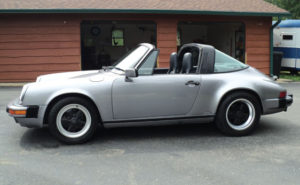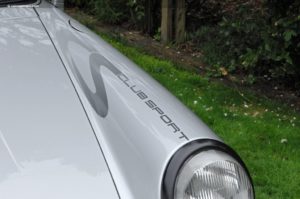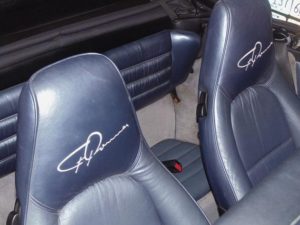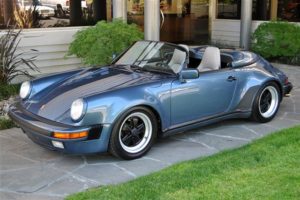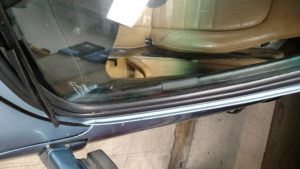We all have our wheelhouse of trivia. I know a guy who can name any ’80s top-20 hit and the band that made it famous in under 20 seconds, another who can explain the relationship of every major Star Wars character throughout each episode, and a Muggle daughter who tells me she would whip me up a batch of Felix Felicis before autocross timed runs, but by definition she is incapable. Which, as I write this, makes me think maybe I need some slightly less dorky friends…
But the point I was trying to establish here is that air-cooled 911s are my trivia wheelhouse. This article’s whole premise started with a conversation I had with our Windblown Witness editr Greg Phillips in 2014 during Porsche’s 60th anniversary celebration for the 911. There was a popular press release out at that time about the history of the 911 and all its generations. So Greg asked me “how many different 911s do you think there are?” He clearly knew this was going to get me riled up as I started counting the 911 chassis variations, and he blurted out that there were 7 generations from the first prototype until the launch of the 991; and only 4 generations of air-cooled 911s:
- Early long hood cars to 73 models
- Short hood cars until 89 models
- 964 Modern Classic
- 993 Last of the air-cooled cars.
Well, I don’t know about the definition of “Generations,” but I do know that Porsche has a series/program list of all the chassis as they change through the years. Porsche clearly had no idea how long 911 productions would run, as there is great inconsistency in changing from series to program and numbers to letters. But what I am going to do here is show you how to walk around a locked, parked air-cooled 911 and tell exactly what year it is, with a few notable exceptions. (For an unchanged US model car, that is.) Let’s get started with a few terms first so we are all talking the same language. Knowing these will help us determine the year of the car.
Long hood cars. These are the earliest cars where the front of the hood curves all the way down the bumper. These were produced through the end of the 1973 model year.
Short hood cars. These cars have taller/larger impact bumpers so the hood had to be made flatter and shorter; these are 1974-1989 model year cars.
Short wheelbase cars (SWB). These cars were the original production cars up through 1968.
Long wheelbase cars (LWB). These cars started in 1969 and had the rear axle moved back 57mm (2.24 in) to reduce that pesky oversteer issue.
901/915/G50 cars. These are the different transmission models as the series progressed that play a role in determining the year.
Porsche didn’t ever change a car completely for only one year but would change one or multi*ple features about that car in series, so we can tell what year the car is just by looking at it. Let’s get started in the beginning…
Long hood, short wheelbase cars:
0 (Zero) series cars run from 1964 to 1967 and have only subtle exterior differences. These are long hood, short wheelbase cars. You can tell these cars from the script on the rear deck lid, door handles and gauges. 1964 cars, which you will probably never see, have a narrower PORSCHE on the back and no 911 script on the deck lid or dash. These cars also have no rocker panel trim.
All of these zero series cars have very narrow door handles with thumb-activated, push button opening. The gauges have signature green numbers with black faces, and the trim strip at radio height is all wooden on 65 cars, wooden with aluminum trim on ’66 cars, and all aluminum on 67/68 cars, except for the “S” model, which has basket-weave vinyl with aluminum trim for the first time.
1965 911’s are the first to have a 911 badge on them, and they are located on the lower right corner of the deck lid and angled. The shift boot is very small and leather. Window cranks are all chrome with no center black plastic insert.
1966 models look very similar to 1965 except the leather shift boot is now a rubber accordion type. The clues to a ’65 911 are all about counting the screws—4 screws holding on the front horn grilles, and 6 screws holding down the leading edge of the dash pad next to the windshield.
1967 models have different window cranks that have black coverings, unlike the open all chrome units used previously. And if it’s a targa and a 0 (Zero) chassis it is a ’67.
If you run across what you think is a Zero series car but it has black gauges with white lettering and bulky square door handles with push button activation it is actually an “A” series car. A lot of people think “A” series cars are all short wheel base cars but actually only 1968 cars are really “A” series cars.
These cars will also have very square looking 911 badges on them centered on the deck lid, and only 911 and 911L models were available in the US. 911T and 911S models were only available in Europe due to emissions regulations. The dead giveaway for a 1968 car is the tacked on front and rear side marker lights, not very aesthetically pleasing so many have been re
moved. 1968 also marks a change in wiper arms—’67 and earlier park right and are silver; ’68 and later are black and park left. And if it is a short wheel base car and says “SPORTOMATIC” across the back it is a 1968. But good luck finding one of those!
Long hood, long wheelbase cars:
1969 models changed hugely with the introduction of the “B” series cars. These were the first of the long wheelbase cars and could be determined by the distance of the rear torsion bar plug in the body just in front of the rear wheel opening. If the plug is all the way back it is a SWB car, if there is a 2-inch space it is a LWB car. LWB cars also have a slight fender flare compared to the earlier cars. (Flare may be a generous description; lip is more like it.)
Additional clues you are looking at “B” series car are that the aluminum trim on the dash of the ‘68 has been replaced with a vinyl strip on the ’69. This is also the first time the infamously confusing triple horizontal vent levers appeared on the dash just left of the radio.
So you find a car that looks just like a “B” series 1969 car but it has smooth chrome door handles that have no thumb button but a finger trigger underneath. What you have found is a 1970 “C” or 1971 “D” series car. These cars originally had a 2.2L engine sticker in the rear window but many are gone now.
So 70 or 71 you ask? There is one quick visual clue between 70 and 71 model cars and one that takes a little more looking.
1970 cars received new smooth door handles with finger triggers under the handle (no thumb button as previous models had). These originally had horizontal key slots in the handle for 1970. In 1971 and later they became vertical key slots to match the ignition.
So what about a car with a vertical slot in the driver’s door and a horizontal slot in the passenger side? No this is not a 1970 ½ car. The driver’s door locks are used 100 times more often than the passenger side, so when they get replaced it is with a later door handle. Original horizontal handles are virtually impossible to find used and nonexistent new.
The second clue is on the glove box. 1970 cars have a flush lock with pull lip on the top edge and 1971 and later cars have a rotary knob with a locking key in the center.
So you find another 911 and it looks like a 70/71 car but something looks a little different. First of all, the drivers outside mirror is rectangular instead of round, like all the previous cars we have examined. These changes along with a 2.4L engine sticker on the rear window mean it is a 1972 “E” or 1973 “F” series car.
If it also has what looks like a gas door in the right rear fender just like the one in the left front fender, you have discovered a 1972 “E” series car. No gas door? Then it is a 1973 “F” series car. Some other clues that it is definitely a 1973 model is if it has slightly pointed black rubber bumper guards. Not all 73’s have these rubber bumper guards but most do, with the notable exception of early production cars. Also the engine lid grill and horn grills are now black instead of brushed aluminum, and the dash trim is grained leather instead of basket-weave vinyl with no model insignia.
BTW—that is no gas door in the rear on the ‘72; that’s an engine oil door. The oil tank was moved in front of the right rear wheel from its original location behind the right rear wheel to improve rear weight distribution. But interior heat transfer, sloshing oil noise, and the fact that people kept mistakenly putting gas in there quickly put an end to that design until some 17 years later, when it was brought back in the 1989 964 Carrera-4.
The E/F series cars are the first time we are going to see a major transmission change. Starting in 1972, Porsche introduced a newer stronger transmission, the 915. This transmission was derived from the ultra-successful 908 racecars.
But I said visual clues; and you can’t see a transmission walking around a parked car, that is for sure! You can’t see the transmission but you can see the shifter. Each change in transmission was accompanied by a change in shift pattern which appears on the top of the shift knob.
Cars up through 1971 used the classic 901 transmission with a shift pattern featuring reverse up and to the left, with a dog-legged 1st down and to the left, as opposed to the 1972 model cars with reverse down and to the right. 1972 and later cars also have retractable seat belt reels. They will be short and tight, while earlier cars will be kind of draped across the seat.
Another clue is 901 units have a very small rubber shifter boot the size of a Dixie cup. 915 shifters have a much larger shift tower with reverse lock-out that is the size of a 1-pound coffee can under the rubber accordion shaped rubber boot. The exception to the rule is in the 1972 911 that has the smaller, reversed 901-style shifter and 915 transmission shift pattern. But there is no getting around that telltale oil door in the right rear fender!
Short hood cars:
The next change that was made to the 911 series was huge and very controversial at the time, and lingers even today in the resale values of these cars compared to earlier long hood cars. Impact bumpers were introduced as a safety feature so the cars could survive a 5-mph impact with no damage.
The first run of these short hood cars were produced from model year 1974-1977. Visually, they have the same fender shape as earlier cars with the larger impact bumpers, but the other big visual clue is the one-piece, high-back seats (no detachable head rest).
1974 “G” series cars can be easily distinguished from all other years by their half-sized rear bumper guards, 3.5 inches wide instead of 7-inches. (Don’t be fooled by European delivery cars up to ’89 which all have these narrow bumper guards.)
1975 “H” series cars have wide 7-inch bumper guards but have the same small 911 script on the rear deck lid as the earlier cars. This is the last year for the rectangular brushed stainless outside mirror.
1976 “J” series cars look the same as earlier models with two simple exceptions. The outside rear view mirror is now a larger, body-colored unit, and the 911S badge on the rear deck lid is much larger and fatter script (no spacing between the lettering). If the car is equipped with headlight washers, they are the large stick up version until 1979.
(Were you paying attention?)
Did you notice we went from H to J series cars? That is because there is no “I” in team or Porsche. This is to avoid confusion between I and 1; just like in VIN designation.
Also did you notice I said 911S instead of 911 on the deck lid? That is because the 911S became the base model for the US market in 1976. There was no longer any US standard base model 911.
1977 “K” series 911S cars looked virtually the same as the previous year with a few simple visual exceptions. They now have a center dashboard vent for the optional factory installed air conditioning, or for fresh air with non-A/C equipped cars. Another subtle clue is the change in the oil temperature gauge. Previously oil gauges stopped at 300 degrees and after ’77 model year they stop at 340 degrees.
The Carrera Factor:
1974 was the first year for a US spec 911 carrying the Carrera badge. The original 1973 Carrera-RS was a European market only model. 1974 Carreras had a ducktail rear spoiler like the original Carrera-RS, and 1975-1977 models had a larger Carrera tail similar to what we see on late ’80s cars.
The biggest visual change in these Carrera badged cars was the wider rear fenders to accommodate the larger 7-inch rear wheels or the even cooler, optional 7 and 8 inch wheels. These look almost identical to what was found on 1978 and later 911SC cars.
Speaking of 911SC’s, 1978 brought about huge changes for the L-series 911 line up with the 911SC’s 3-Liter engine, wider rear fenders, and increasingly larger standard option list. Of course there is always that huge giveaway 911SC logo on the rear deck lid.
911SC’s ran from 1978-1983 and have small visual clues between them. They will usually have a center console because factory installed air conditioning was now offered, and the fan and temperature switches went there. They will have factory fog lights, which are very rectangular units with black housings bolted to the front valance. (84 and later are recessed into the valance.)
1978 models will have brushed aluminum window frames; all later years are black. If it has electric windows with all black switches it is a 1978 or later car. 1979 (M-series) and earlier cars that have headlight washers are the huge, stick-up kind that look like a little periscope. The 1980 SC headlight washers are flush with the bumper and quite small by comparison. ’77-79 cars also have a different center dash vent. These cars have tightly spaced horizontal vent louvers, while ’80 and later cars have loosely spaced vertical vent louvers.
1980 and later cars all have power windows and air-conditioning. 1980-1982 cars are very difficult to tell apart. Generally speaking, all of these cars had the silly 85 MPH maximum speedometers. ’78-79 had 150 MPH units and 1983 and later cars have 160 MPH units. To visually separate the ’80-82 cars, you must use the VIN code explained at the end of this article. The mechanical differences can’t be seen walking around the car. 1983 was the first year for a cabriolet, so if it is a convertible, says 911SC on the back, and has bolt on fog lights up front, it is an ’83.
The 1980 model code switch-a roo!
Up until now we have just increased a letter of the alphabet each year of production. Well, things changed in 1980 as VIN’s were required to indicate year, so in 1981 they had to go from 10 digits to 17 for required additional information. In 1980 they switched from “Series” to “Program” and 1980 cars became “A-Program” cars. This is how chassis type and VINs transitioned: 1979 M-series VIN-9119300001 1980 A-Program VIN-91A0130001 1981 B-Program VIN-WP0AA091CBS120001 Now the 10th space would indicate year. (See VIN explanation below.)
The 1984-1989 3.2l Carrera was another substantial change in the 911 line up. With engine stroke increased to obtain the new 3.2L displacement, and new Bosch Moronic fuel injection, this car was a game-changer. Visually, the biggest change was the recessed front fog lights, other than the huge “Carrera” on the rear deck lid where 911SC used to be.
1984 “E-program” cars are essentially 1983 cars with different fog lights and engine. A big tell-tale of an 84 Carrera from an 85 is manual seats with small seat rails and 6mm mounting bolts, and a 3-spoke steering wheel from the 911SC.
1985 “F-Program” cars will have an electric driver’s side seat with a 4-spoke steering wheel. Earlier seats used to have a round adjusting knobs at the seat back pivot, but now adjust with levers at the front of the seat.
1986 “G-Program” cars are easy to tell apart from all other model years as they have a new, larger, center dash vent and a 915 shifter, the only year with this combination.
1987 “H-Program” cars are the first year of the G50 cars, with the latest and easiest shifting transmission to date. To tell a G50 transmission car from an earlier 915 car you can look inside or outside. On the inside you will find a taller shifter with a standard 5-speed H pattern and reverse left and up in a mirror position to the 5th gear spot.
Outside look at the rear torsion bar cover just in front of the rear wheel opening. You will see that it peeks out above the lower rocker panel. If it is just a sliver that peeks out about ½ inch it is a 915 car. If it is about 1/3 of a circle that pops up about an inch and a half or better, it is a G50 car.
The rear reflector between the tail lights on 1987 cars changed also. It used to say PORSCHE in black letters up through 1986, and as of 1987 it is more of a clear script. So how to tell 87-89 cars apart? That’s not as easy as it might seem. The easy answer is to look at the 10th space of the VIN through the windshield. 87-H, 88-J, 89-K. (Remember, no “I” cars again) But here are a few other clues about special models:
The 911 Club sport was a stripped down 88/89 model. (Club Sport decal on the left front fender.)
The 1988 250,000th commemorative edition was Diamond Blue metallic with color matching Fuchs wheels and Ferry Porsche’ signature in the headrest of the seats.
1989 silver anniversary cars are silver or black with silk-gray leather seats and Carrera tail. They had an optional oversized center console w/ temperature gauge and multi cassette holder. (Cassettes are like little rectangular music CDs.) They are also the only year 911 to offer 6-inch front with 8-inch rear 16 inch diameter Fuchs wheels. Usually 6’s & 7’s or 7’s & 8’s.
1989 Speedsters had a cut down windshield and turbo body. But the most interesting thing about 911’s in 1989 is that there were two completely different versions. This year was the last of the 3.2L Carrera’s and the very first year for the Carrera-4, the first of the 964-based cars.
But we must save something for next time, when we examine 964s, “The modern Classic,” and 993s, “The last of the air-cooled cars.”
VIN (Vehicle Identification Number) clues: All US model 911’s from 1969 on have a VIN number plate on the inside of the windshield low on the driver’s side. The first three or four numbers tell you the model and year of the car. Before 1970, the first two digits are the model (11 for 911 or 12 for 912), while the third digit is the year. Thus, 11900343 is a 1969 911T. From 1970 to 1979, the first three digits tell the model (911, 912 or 930 for turbos), the fourth digit tells the year, so 9117212747 would be a 1977 911S Targa. 1980 is the weird one—still with 10 digits, but an interim sequence before starting the mandated 17-digit VIN for 1981. The first two digits designate model (91 for 911 and 93 for 930/Turbo) the third place designates the year, starting with 1980 equaling the start of the alphabet, A. So 91AO144272 is a 1980 US model coupe. From 1981 on, all cars sold in the US had to have a standardized 17-digit VIN. The program year is designated by the 10th digit. WPOAA091CBS121573 is a 1981 US model 911 coupe. B=1981, C=1982, D=1983, and so on. You might have noticed that there are no pictures in this article. Pictures would have made understanding the difference in door handles and dash features much easier, but it would have literally consumed the entire magazine. So I have posted the entire article to my website with accompanying photographs. Just click the link or QR code below and follow along on your smart phone. The best part is you can bookmark it and play the trivia game at the next SDR concours with the sea of different year Porsche 911s. Everyone will think you are an expert!

